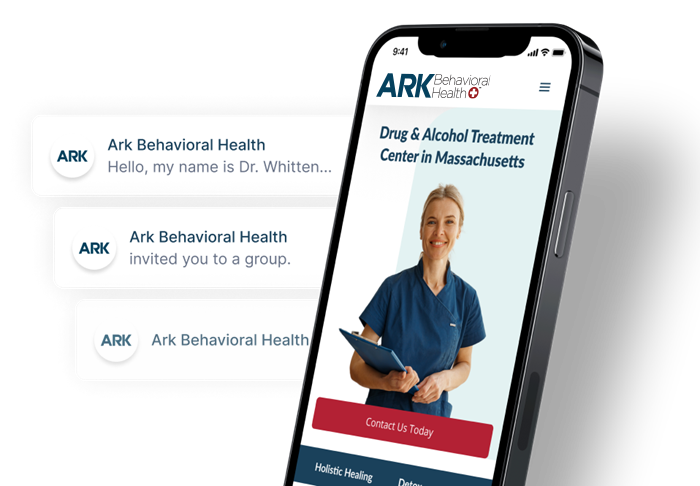Medication-Assisted Treatment (MAT) | Overview & Efficacy For Opioid & Alcohol Addiction
- What Is Medication-Assisted Treatment (MAT)?
- MAT For Opioid Addiction
- MAT For Alcohol Addiction
- Other Medications For Drug Addiction
- MAT & Pregnancy
- Is MAT Effective?

Many people struggle to find success in drug rehab because of cravings that distract them from treatment or drive them back to substance abuse. Medication-assisted treatment (MAT) combines medication and behavioral therapy to alleviate this problem.
What Is Medication-Assisted Treatment?
Medication-assisted treatment (MAT) offers FDA-approved medications as an alternative to opioid or alcohol use. These medications reduce cravings and help the body and brain function normally without the negative effects of substance abuse.
For MAT to be effective in treating addiction, the medication must be paired with behavioral therapies and other evidence-based treatment methods. While some people may be on medication for years through MAT, the goal is usually a substance-free life.
A “whole-person” treatment program involving MAT teaches you life skills and healthy habits to replace substance use. It also helps you resolve deep-rooted issues that lead to drug abuse.
Medication-assisted treatment works best with a personalized substance abuse treatment plan. Treatment options may include:
- cognitive-behavioral therapy
- substance abuse counseling
- peer support groups
- exercise and recreation
- creative therapies, such as art or music
- education
- life skills and vocational training
- mental and physical health care
Medication-Assisted Treatment (MAT) For Opioid Addiction
Medication-assisted treatment (MAT) is most commonly used for opioid addiction. Opioids can cause intense cravings and withdrawal symptoms that linger after detox. MAT is the only way some people are able to overcome addiction to heroin and other potent opioids.
With the opioid epidemic in the United States for the last decade, many people have become addicted to prescription opioids like hydrocodone (Vicodin) and oxycodone (OxyContin). Fentanyl, a deadly synthetic opioid, is often laced into heroin and is responsible for a recent spike in opioid overdose deaths.
It’s more important than ever that people who suffer from opioid addiction get the help they need. MAT is an effective method that may be successful when abstinence-based treatment fails.
FDA-approved medications used in MAT for opioid addiction include:
- Methadone (Methadose) is an opioid agonist that activates opioid receptors to reduce withdrawal symptoms and cravings. Though it’s an opioid drug, it is much milder than heroin and doesn’t cause the same euphoric effect. It blocks the effects of other opioids.
- Buprenorphine (Subutex, Suboxone, Probuphine) is an opioid partial agonist that targets opioid receptors. It can cause euphoria, but it’s much weaker than other opioid drugs. It decreases cravings and withdrawal symptoms.
- Naltrexone (Vivitrol) isn’t an opioid, but it binds to opioid receptors to alleviate cravings. It blocks the effects of opioids so they don’t cause sedation or euphoria. You have to be completely detoxed from opioids before you start taking naltrexone.
Medication-Assisted Treatment (MAT) For Alcohol Addiction
Medication-assisted treatment (MAT) for alcohol addiction helps people avoid drinking alcohol so they can be successful in recovery.
FDA-approved medications used in MAT for alcohol addiction include:
- Acamprosate (Campral) reduces alcohol cravings but still allows people to feel withdrawal symptoms if they do drink. It’s most effective in people who have stopped drinking and want to avoid relapse, rather than people who are still trying to stop.
- Disulfiram (Antabuse) decreases the pleasurable effect of alcohol by making you feel physically ill if you drink. Disulfiram can cause nausea, vomiting, headache, chest pains, and difficulty breathing if combined with alcohol.
- Naltrexone (Vivitrol) blocks the euphoric effects of alcohol so there’s no reward associated with drinking.
Other Medications For Drug Addiction
In 2018, the FDA approved lofexidine (Lucemyra) as the first non-opioid medication to treat opioid withdrawal symptoms. It can help people get through the uncomfortable withdrawal process and begin an opioid treatment program.
Drug addiction treatment is a difficult process that can come with physical and mental discomfort. Medications to treat withdrawal symptoms after detoxification—such as anti-nausea drugs and over-the-counter pain relievers—may be incorporated into a treatment plan.
People who suffer from co-occurring disorders (another mental disorder along with addiction) may be able to take medications that treat that separate issue, such as antidepressants or anti-anxiety drugs. The use of medications will be closely monitored to prevent abuse.
Medication-Assisted Treatment (MAT) & Pregnancy
Though many medications are discouraged during pregnancy—including opioids—medication-assisted treatment (MAT) can help addicted women have a healthier pregnancy and birth.
A woman with an opioid use disorder (OUD) may take high doses of potent drugs like heroin or oxycodone (OxyContin). Drug addiction can be passed onto the fetus through the placenta. MAT provides an alternative medication to reduce drug use and its effects on the unborn baby.
If a woman stops taking opioids during pregnancy, the acute opioid withdrawal can be dangerous to her and her unborn baby. MAT with methadone or buprenorphine can ease withdrawal symptoms and reduce the risk of pregnancy and birth complications related to addiction.
Is Medication-Assisted Treatment (MAT) Effective?
Some people object to medication-assisted treatment (MAT), claiming that it replaces one substance of abuse with another.
But MAT isn’t just about giving someone a different drug to take. It’s about healing the whole person through therapy and life skills training. The medication makes it possible for them to get past substance abuse and start building a better life.
When MAT medications are taken as prescribed, they don’t cause you to get high, so they have a low potential for abuse.
MAT has been proven to produce positive results, including:
- less criminal activity related to opiate use
- reduced overdose rates
- increased chance of survival
- people are more likely to stay in addiction treatment
- addicted individuals become productive members of society
- better health for pregnant women and their babies
To learn more about medication-assisted treatment, speak with an Ark Behavioral Health specialist today.
Written by Ark Behavioral Health Editorial Team
©2024 Ark National Holdings, LLC. | All Rights Reserved.
This page does not provide medical advice.
National Institute on Drug Abuse - FDA approves first medication to reduce opioid withdrawal symptoms
National Institute on Drug Abuse - Treatment Approaches for Drug Addiction DrugFacts
North Carolina Pregnancy & Opioid Exposure Project - Medication-Assisted Treatment in Pregnancy - Overview
Substance Abuse and Mental Health Services Administration - Medication-Assisted Treatment (MAT)
Substance Abuse and Mental Health Services Administration - MAT Medications, Counseling, and Related Conditions


Questions About Treatment?
Ark Behavioral Health offers 100% confidential substance abuse assessment and treatment placement tailored to your individual needs. Achieve long-term recovery.
100% confidential. We respect your privacy.
Prefer Texting?
Our friendly support team is here to chat 24/7. Opt out any time.







 Learn More
Learn More








